
|
RESOLUTION SATELLITE IMAGERY TO DETECT STRESS IN WHEAT IN EGYPT
|
|
|
A. H. Elmetwalli
|
|
|
Engineering Depertment, Faculty of Agriculture, Tanta Univercity, EGYPT
|
|
|
adelra99@yahoo.com
|
|
|
Mapping and detecting stress at both local and regional scales are very important in site specific management. Launching the first generation of high spatial and spectral resolution remote sensing satellite at the beginning of the 21st century provided the opportunity to have better understanding of crop stress and the extent of stress in a specific environment. This work was carried out to assess the ability of hyperspectral and high spatial resolution remote sensing imagery to detect stress in wheat in the Nile Delta of Egypt. A field work visit was made during winter season of 2007, in March, (5-30: wheat) to collect ground reference data including soil samples, vegetation samples, water samples, chlorophyll estimates, reflectance measurements and GPS coordinates. The work visit was timed to coincide with the acquisition of QuickBird satellite imagery (April 7, 2007). The results further showed that the QuickBird image successfully detected stress within the field and local scales, and therefore can be a robust tool in identify
ing issues of crop management at a local scale. A strong linear relationship existed between RVI derived from in situ and RVI derived from satellite data (R = 0.75; p = 0.000). The results further showed that MLC was an effective classification algorithm for differentiating different crops within the study area.
|
|
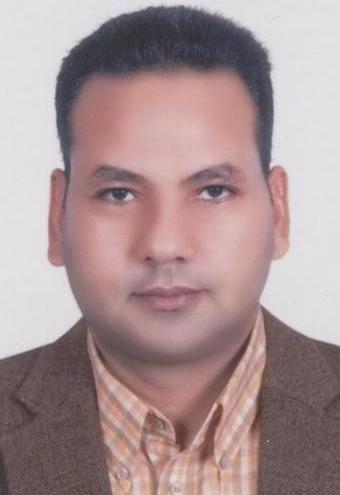
|
Assessment and Modeling of Groundwater Quality using WQI and GIS in Upper Egypt Area
|
|
|
Dr.Eng. Ragab Elsayed Rabeiy
|
|
|
Mining and Metallurgical Eng. Dept., Faculty of Engineering Assiut University, 71515 Assiut, Egypt.
|
|
|
rrabeiy@aun.edu.eg
|
|
|
The continuous growth and development for population required more fresh water for drinking, irrigation and domestic especially in the semi-arid countries like Egypt. Groundwater plays an essential role for the development of new cities in Egypt specially the amount of River Nile’s water is limited. In this study 812 groundwater samples were taken within the middle area of Upper Egypt (Sohag and Assiut governorates) to assess Water Quality Index (WQI) of groundwater. The WQI is a mathematical model used to transform many water parameters into a single indicator value which represents the water quality level. Ten water parameters were analyzed at each groundwater sample (Na, K, Ca, Mg, HCO3 SO4, Fe, Mn, EC and pH) to exploit them in WQI calculations. A classical statistics are applied for the raw data to examine the distribution of physicochemical parameters of groundwater. The estimated values of WQI indicated that 20% from the total samples is excellent and 75 % of water is good water, while 7% is very poor water and 1% is not suitable for drinking. The spatial distribution of the estimated values of WQI as well as every groundwater parameter is modeled using GIS. The relationship between groundwater parameters also is tested by estimating the correlation coefficient and a strong relationship is found between some water parameters such as Ca and Cl.
|
|
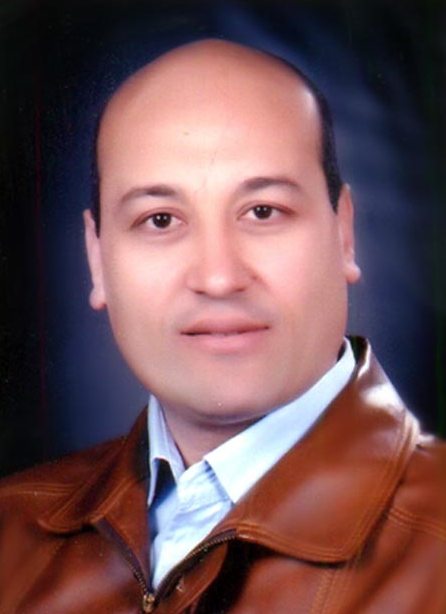
|
Effect of the waves comes from cellular phone towers on human body
|
|
|
N.M.Elsiragy, R.A.Ghasy and A.A.Elbendary
|
|
|
Physics Department, Faculty of science, Tanta University, 31527 Tanta, Egypt.
|
|
|
Atef.elbendary@science.tanta.edu.eg
|
|
|
The effect of base stations which have electronic equipment and antennas are studied, The position of cellular phone towers with respect to people is investigated, some interested studies on cellular phone towers and cancer are taken into consideration, British researchers compared a group of more than 1,000 families of young children with cancer against a similar group of families of children without cancer. Other researcher studies the effect of Cell phone tower and examined the relationship between radiation exposure and cancer rates were conducted in the city of San Francisco in addition to cities in Austria, Germany, dating as far back as the 1970s. Even if RF waves were somehow able to affect cells in the body at higher doses, the level of RF waves present at ground level is very low – well below the recommended limits. Levels of energy from RF waves near cell phone towers are not significantly different from the background levels of RF radiation in urban areas from other sources, such as radio and television broadcast stations. Other researchers compared a group of more than 2,600 children with cancer to a group of similar children without cancer. They found that those who lived in a town that could have exposed them to higher than average RF radiation from cellular phone towers in the previous 5 years had a slightly higher risk of cancer.
|
|
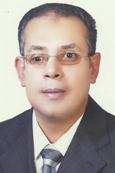
|
Monitoring the Urban Encroachment as devoured to Agricultural Development of Wadi Qena and Wadi EL-Qarn areas, Eastern Desert, Egypt
|
|
|
Ibrahim, M.M.1, M.A. Wahab2, R.R. Ali2, A.A. EL Baroudy1, and A.A Hussein2
|
|
|
1Soil and Water Dept., Faculty of Agric. Tanta Univ., Egypt 2Soils and Water Use Dept., National Research Centre (NRC), Egypt
|
|
|
drbaroudy@yahoo.com
|
|
|
There are many types of land degradation predominate in Egypt, such as water logging, salinization, sand dunes and urban encroachment. Urban encroachment on agricultural land is considered the most dangerous types of land degradation as it is an irreversible process and holds the land to desertification. Thus, the land becomes out of agricultural utilization. Nowadays, with the actual advances in remote sensing and GIS techniques, it becomes clear that prior to any agricultural development a change detection study must be conducted in order to determines and analysis the changes which are happening over a period of time. The current study aimed to determines, delineate and map the changes which are occurring in land use/land cover within the investigated area of wadi Qena and wadi El-Qarn in the eastern desert, and emphasize on the urban encroachment. The post classification change detection approach, based upon multispectral satellite imageries including TM images acquired in 1984 and 2000 and OLI-TIRS acquired in 2015, was applied to produce the final change detection maps. The obtained results indicate that there is an excess in the agricultural areas by percentage 9.09 %, 1.94 % and 11.21 %, whereas the urban areas has exceeded by percentage 60.5 %, 196.96 % and 376.52 % of the total area. Nevertheless, the agricultural area was increased; the urban encroachment was devoured this increasing.
Keywords: Remote Sensing, GIS, Change detection, Urban encroachment, Wadi Qena and Wadi El-Qarn.
|
|
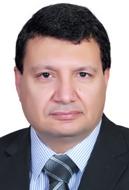
|
IMPROVING PRODUCTIVITY OF SOLAR ENERGY DISTILLATION STILL FOR SEA WATER
|
|
|
Dr. Atef Fathi Ghandour
|
|
|
Researcher, Ag. Eng. Res. Inst., ARC.
|
|
|
atef_ghandour@yahoo.co.uk
|
|
|
Solar distillation still is provided with a mesh material welded on absorber sheet, is designed and tested in the present investigation. The mesh material acts as a wick material on the absorbing surface to improve the productivity of the distilled water. In this study the effect of the type of the mesh material, the ambient temperature, the wind speed, cooling water flow rate over the glass cover and the flow rate of the feed salt water on the productivity of fresh water are investigated. The mathematical treatment employed here includes the basic calculations of heat transfer mechanisms, which take place in the still enclosure, absorber and the glass cover. The study indicated that the still provided with mesh material gives 13% more in the daily productivity is than that of the conventional still. This improvement occurs with flow rate of feed salt water of 0.65 lit/s, cooling water flow rate of 0.03 lit/s over the glass cover and air gap constant of 30 mm.
|
|
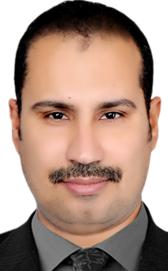
|
Reduced graphene oxide-bi2wo6 composite photocatalysts one-step synthesis of spherical-like as an improved photocatalyst under visible light
|
|
|
Awad I. Ahmeda, Salem, E.Samraa Amr, A.Ahmeda, Ahmed Awadb
|
|
|
aChemistry Department, Faculty of Science , Mansoura University, Egypt, abChemistry Department, Faculty of Education and Science , Aden University, Yemen
|
|
|
dr.ahmed.awadh.alawlaki.1974@gmail.com
|
|
|
Bi2WO6/graphene nanocomposite (GOBi2WO6-X) photocatalysts were successfully synthesized via a facile in situ reduction of graphene oxide and Bi2WO6 in water. High efficiency for the degradation of Methylene Blue under both visible lights was obtained for the GBW-X photocatalysts. The morphologies, structures and optical properties of the Bi2WO6 and RGO/Bi2WO6 nanocomposites were studied by X-ray diffraction (XRD), Fourier-transformed infrared spectroscopy (FTIR), and UV-visible diffuse reflectance spectroscopy (DRS/UV-Vis. RGO/ Bi2WO6 composites own more intensive absorption in the visible light range compared with pure Bi2WO6. These characteristic structural and optical properties endow RGO/ Bi2WO6 composites with enhanced photocatalytic activity. The photocatalytic degradation efficiency of methylene blue by RGO/Bi2WO6-0.5 wt. % under visible-light was ∼ 4.3 times that of pristine Bi2WO6 respectively. The visible photocatalytic activity originated from the •OH and O2 •−, which were formed by photosensitization of graphene in RGO/Bi2WO6. The enhancement of visible photocatalytic activity in RGO/Bi2WO6 was attributed predominantly to the high separation efficiency of photoinduced electron−hole pairs causing rapid generation and separation of photo-generated charge carriers of graphene in RGO/Bi2WO6.
|
|

|
Green plastic: biodegradable polymers based on pva and nano wood flour
|
|
|
E. M. Abdel Bary and Ammar N. Harmal
|
|
|
Chemistry Department, Faculty of Science, Mansoura University, Mansoura, Egypt
|
|
|
ammarharmal.chem@gmail.com
|
|
|
The environmental pollution is a very serious problem which cannot be neglected. One of the most important reason is the packaging materials, which are used in very large quantities. This stimulated the research for getting biodegradable materials. From the entire plastic production, 41% is used in packing industries, out of which 47% is used for the packing of foodstuffs .There is an urgent need for the development of green polymeric materials that would not involve the use of toxic or noxious component in their manufacture and could be degraded in the natural environmental products. The present work is dealing with the preparation and characterization of biodegradable composites consisting of cross linked PVA and chemically modified wood flour. The wood flour were maleated via reacting with maleic anhydride to enhance their compatibility with PVA. The effect of concentration of modified wood flour in the composite and the effect of crosslinking agent was studied. The samples were subjected to UV radiation and heat and their physical and mechanical properties were evaluated before and after aging. The evaluation has been carried using mechanical testing measurements. Thermal properties using DSC and IR spectroscopic analysis as well as swelling measurements in water.
|
|

|
Algal Biofuels Production for Socio-Economic Development and Green Environment
|
|
|
Reda A.I. Abou-Shanab
|
|
|
Environmental Biotechnology Dept., City of Scientific Research and Technology Applications, New Borg El Arab City 21934, Alexandria, Egypt
|
|
|
rabousha@umn.edu
|
|
|
The energy crisis is considered as one of the most significant issues in the 21st century. The use of petroleum-based fuels has become more restricted due to the declining supply of fossil oils and the demand for the reduction of greenhouse gas emissions that cause global warming. Therefore, carbon neutral and sustainable sources of energy management are urgently needed to address these challenges. Microalgae have attracted a great deal of attention as a biofuel feedstock due to their advantages of fast growth, high oil yield and their ability to rapidly convert carbon dioxide into hydrocarbon biomass consisting of proteins, amino acids, lipids, polysaccharides, carotenoids and other biologically-active molecules. These products can be processed into both biofuels and valuable co-products. In this article we present an overview about the strategies for enhancing algae based fuels (biodiesel, bioethanol, and bio-hydrogen). In addition, the economic challenges in the production of biofuels have been discussed in view of the future prospects for successful commercialization of microalgae-based fuels.
|
|

|
الاستشعار عن بعد فى التنبؤ بنقص المياه والنيتروجين على محصول البطاطس تحت الظروف الليبية
|
|
|
الطاهر يوسف على
|
|
|
قسم الهندسة الزراعية-كلية الزراعة جامعة طرابلس- ليبيا
|
|
|
tfouda@yahoo.com
|
|
|
الهدف الرئيسي لهذا البحث هو تقييم امكانية دقة بيانات الاستشعار عن بعد في الكشف عن الاجهاد للمحاصيل الزراعية.
و تم القيام بتجربة حقلية على محصول البطاطس واخضاعها لمستويات نقص مختلفة في التسميد بالنيتروجين و الرطوبة, وقد تم استخدام ,اربع مستويات ري (0.5 ,0.75 , 1.00و1.25 ETc ) وثلاث مستويات للتسميد بالنيتروجين هي ( 0 , 200,100 ) كيلو جرام للهكتار.
وتم تصميم التجربة بشكل وحدات مساحية منشقة , اضافة الى ذلك نجد ان صور القمر الصناعي عالية الدقة المكانية بما في ذلك صور القمر الصناعي (Geo Eye-1) و القمر الصناعي (Spot HRV) والتي تم التقاطهما من منطقة غرب طرابلس – ليبيا وذلك لتقييم قدرة صور القمر الصناعي عالي الدقة المكانية للكشف عن الاجهاد في محصول البطاطس على المستوى المحلي والاقليمي ,والعمل الحقلي كان مرتطبا زمانا ومكانا مع التقاط الصور لجمع البيانات المرجعية الاساسية بما في ذلك اخذ احداثيات (GPS) واخذ العينات النباتية وعينات التربة وقراءات جهاز (SPAD) الخاص بقياس الكلوروفيل.
واوضحت النتائج اثارا هامة لكل من الاجهاد النيتروجيني والمائي على خصائص محصول البطاطس وتم ملاحظة ارتباطات قوية وهامة بين المحصول والمؤشرات المختلفة (NDVI) مؤشر فرق الغطاء النباتي من خلال صور القمر الصناعي وبين خصائص المحصول المختلفة بمعامل ارتباط (0.75> r) واظهرت صور القمر الصناعي (Geo Eye -1) الاجهاد بنجاح على مستوى الحقل والمستوى المحلي.وبذلك يمكن ان يكون أداة قوية في التعرف على كيفية ادارة المحصول والتنبؤ بالانتاجية على المستوى المحلي
|
|
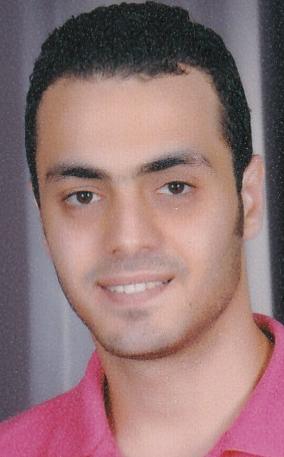
|
STUDY THE DURABILITY PERFORMANCE OF CONCTERE MADE OF BLENDED CEMENT
|
|
|
Eng. Mohamed Fathy Elsedemy, Dr. Alaa El-Din Sharkawi, Dr. Mohamed Helmy Taman
|
|
|
Structural Engineering Department, Tanta University, Egypt.
|
|
|
Elsedemey@hotmail.com
|
|
|
Cement is the most prevalent construction material in the world. It is well known that each ton of cement produces about tons of carbon dioxide, which increases the global warming problem. On the other hand, the production of cement clinker consumes high demand of energy, which increases the cement production costs and affects the availability of energy resources. The Ground Granulated Blast Furnace (GGBF) slag blended cement is used in many industrial countries, while there are many limitations for its use in the domestic market due to the lack of adequate studies on the durability performance of concrete made of GGBF slag blended cement. In this research, the performance of using GGBF slag blended cement – from different sources- in concrete was investigated under various accelerated environmental exposure conditions. In order to explore the influence of using pozzolanic material as partial replacement of the GGBF Slag blended cement, Fly Ash (FA) and Micro Silica fume (MS) were partially replaced slag blended cement with ratios 20% and 10% and the performance of all the concrete mixes made of these different blended cement types were compared with that made of Ordinary Portland Cement (OPC). Generally, many advantages were monitored with using GGBF slag blended cement, such as, lower permeability and decreased chloride ion penetration. However, the aforementioned concrete properties enhancement was depending on the GGBF slag cement type. This paper is intended to provide guidance for those concerned with the specification; application and performance of concrete in practice
|
|

|
PERFORMANCE OF THE FIBROUS LIGHTWEIGHT CONCRETE USING LOCAL CONSTITUENTS
|
|
|
Eng. Engy Mohamed Abd EL-Hady Kassm, Dr. Alaa El-Din Sharkawi, Dr Mohamed Sakr
|
|
|
Structural Engineering Department, Tanta University , Egypt.
|
|
|
emk_26990@yahoo.com
|
|
|
Producing lightweight concrete with suitable structural properties is always a challenge specially in case of using local available constituent materials. On the other hand, adding fibers to the concrete mix enhances various characteristics of the concrete such as cracking behavior and toughness. Conventional concrete loses its strength after formation of multiple cracks. However, fibrous concrete can sustain a portion of its resistance following cracking to resist more cycles of loading.
In this research, exploratory study was performed to evaluate the main properties of fibrous lightweight concrete made of different local available wastes aggregates (i.e. crushed clay and lightweight bricks). Based on the experimental results, the maximum reduction in concrete bulk density was 1.15 gm/cm3 for crushed white bricks and 1.34 gm/cm3 for crushed red bricks compared to 2.2 gm/cm3 for normal weight aggregate concrete. On the other hand, minimum reduction of compressive strength was 5.15 Mpa for crushed white bricks and 9.54 Mpa for crushed red bricks compared to 22.84 Mpa for normal weight aggregate concrete.
|
|
|